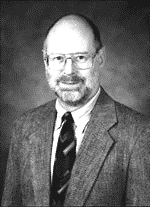Department of Physics and Astronomy: Publications and Other Research

Robert G. Fuller Publications
Document Type
Article
Date of this Version
January 1993
Abstract
Commonly, multimedia is used as a modern name for interactive video. It simply means using a computer to control the presentation of video images to an audience. It facilitates glitzy presentations of boring data. In my view, this is hype. However, there is a more profound sense of the term. Multimedia can be seen in an historical context that places it in the tradition that began with Vannevar Bush, director of the U.S. Office of Scientific Research and Development, who in 1945 published an article, "As We May Think" in the Atlantic Monthly. In that article he suggested a "future device for individual use, which is a sort of mechanized private file and library." Multimedia also belongs to the tradition based on the work of Douglas C. Engelbart, who, while working at the Stanford Research Institute, began to develop a system for augmenting human intellect. Additionally, multimedia is the present day representation of "hypertext," a word coined by Theodor H. Nelson in 1965 for nonlinear, or nonsequential, writing and reading. He envisioned a multidimensional text with junctions for burrowing into the material for details, definitions, and background information.


Comments
Published in COMPUTERS IN PHYSICS, VOL. 7, NO. 1, JAN/FEB 1993.